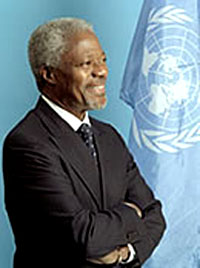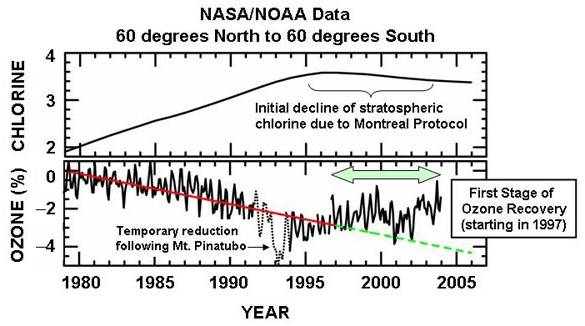|
The Montreal Protocol on Substances that Deplete the Ozone Layer
" Perhaps the single most successful international agreement to date has been
the Montreal Protocol. "-Kofi Annan, Former Secretary General of the United
Nations In 1985 the Vienna Convention established mechanisms for international co-operation in research into the ozone layer and the effects of ozone depleting chemicals (ODCs). 1985 also marked the first discovery of the Antarctic ozone hole. On the basis of the Vienna Convention, the Montreal Protocol on Substances that Deplete the Ozone Layer was negotiated and signed by 24 countries and by the European Economic Community in September 1987. The Protocol called for the Parties to phase down the use of CFCs, halons and other man-made ODCs.
After a series of rigorous meetings and negotiations, the Montreal Protocol on Substances that Deplete the Ozone Layer was finally agreed upon on 16 september 1987 at the Headquarters of the International Civil Aviation Organization in Montreal. The Montreal Protocol stipulates that the production and consumption of compounds that deplete ozone in the stratosphere--chlorofluorocarbons (CFCs), halons, carbon tetrachloride, and methyl chloroform--are to be phased out by 2000 (2005 for methyl chloroform). Scientific theory and evidence suggest that, once emitted to the atmosphere, these compounds could significantly deplete the stratospheric ozone layer that shields the planet from damaging UV-B radiation. Man-made chlorines, primarily chloroflourobcarbons (CFCs), contribute to the thinning of the ozone layer and allow larger quantities of harmful ultraviolet rays to reach the earth. The Montreal Protocol on Substances that Deplete the Ozone Layer is one of the first international environmental agreements that includes trade sanctions to achieve the stated goals of a treaty. It also offers major incentives for non-signatory nations to sign the agreement. The treaty negotiators justified the sanctions because depletion of the ozone layer is an environmental problem most effectively addressed on the global level. Furthermore, without the trade sanctions, there would be economic incentives for non-signatories to increase production, damaging the competitiveness of the industries in the signatory nations as well as decreasing the search for less damaging CFC alternatives.
NASA/NOAA satellite data showing the rise in stratospheric chlorine and corresponding decline in ozone layer thickness from 1979 to 1997. As stratospheric chlorine declined in response to enactment of the Montreal Protocol, the first stage of ozone recovery began. At meetings in London (1990), Copenhagen (1992), Vienna (1995), Montreal (1997) and Beijing (1999) amendments were adopted that were designed to speed up the phasing out of ozone-depleting substances.
The table below shows the status of Ratification, Accession, or Approval of the agreements on the protection of the stratospheric ozone layer as provided by the Depositary, the United Nations Office of Legal Affairs, New York
a With the
exception of a very small number of internationally agreed essential uses that
are considered critical to human health and/or laboratory and analytical
procedures. |
|||||||||||||||||||||||||||||||||||||||||||||||||||||||||||||||||||||





